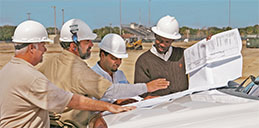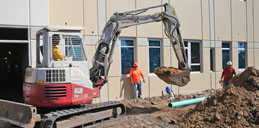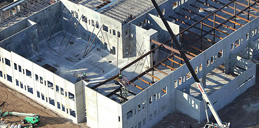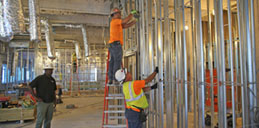How to Look at Traditional Offices Spaces in a Different Light:
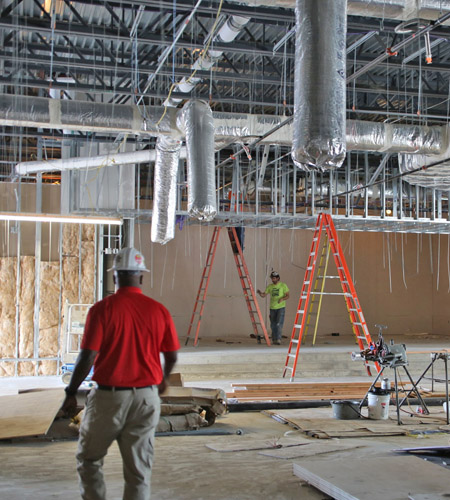 Out with the old — in with the new: The traditional office space is changing and it’s time for companies to modernize or risk being left behind. It wasn’t all that long ago when young start-ups fueled by vibrant and energetic Millennial entrepreneurs began transforming old warehouses and factories into cool workspaces. And it didn’t take long for traditional companies to capitalize on the trend to attract the next generation of workers.
Out with the old — in with the new: The traditional office space is changing and it’s time for companies to modernize or risk being left behind. It wasn’t all that long ago when young start-ups fueled by vibrant and energetic Millennial entrepreneurs began transforming old warehouses and factories into cool workspaces. And it didn’t take long for traditional companies to capitalize on the trend to attract the next generation of workers.
But the warehouse office is no longer as trendy as it once was. Instead, old-school companies are transforming the traditional office space into modern masterpieces. It’s a revolutionary way of thinking. Mixing corporate culture and social values with modern design principles to create a happier and healthier work environment that translates into increased productivity and sales.
The modern open office at Capital One Financial with its shared workspaces and open meeting pods, for example, was designed to foster transparency and create a sense of openness among employees. And a recent company survey shows that employees agree. In fact, 82% of its employees stated that office design is the key to fostering innovation. In another example, Intuit’s ultra-modern headquarters in Mountain View, CA includes a game space where employees can play and brainstorm product ideas.
Preparing for Generation Z
With 92 million workers, Millennials represent the largest generation of workers. But as Millennials move up the company ladder, Generation Z is right behind and will be an even larger workforce. Gen Z, born between 1995 and 2010, have already begun graduating college and are entering the workforce. Representing 25% of the U.S. population, this group of workers are more socially connected than their Millennial counterparts. While they share similar entrepreneurial traits, Gen Z workers are more competitive, enjoy team collaboration, expect company benefits and want a work-life balance.
Changing Workplace Culture
When you have three to four generations of employees working under one roof, its a balancing act for companies to avoid a culture clash when designing modern office spaces. That’s why many companies are breaking down walls to create a sense of community that encourages employees to collaborate and socialize in the office. In today’s workplace culture, aesthetics is just as important as function. Modern desks and chairs need to be ergonomic and comfortable, yet flexible to adapt to individual preferences. Eliminating fluorescent lights and windowless offices in favor of large windows that bring in natural light creates harmony in the workspace.
Knocking Down Barriers in the Workplace
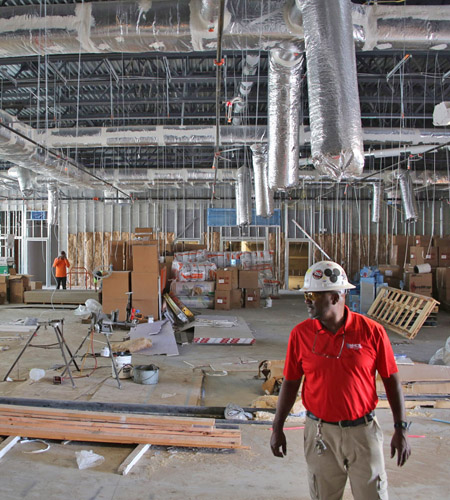 There is no one office design that fits all companies. Each company has a different set of employees with their own traditions and values that define a company’s culture. Its important for company executives to reflect on their individual workforce to create a workspace that will be appealing to most employees.
There is no one office design that fits all companies. Each company has a different set of employees with their own traditions and values that define a company’s culture. Its important for company executives to reflect on their individual workforce to create a workspace that will be appealing to most employees.
In the past, most employees worked in cubes or private offices. But to cut costs and make workers and executives more approachable, companies have knocked down these barriers. Most offices today incorporate an open office design that is free of cubicles and private offices. While this approach has helped reduce costs and foster a team spirit it isn’t without its share of criticism. Large open spaces can become loud and some employees feel a loss of privacy or self-identity in the workplace. Addressing these issues during the design phase and encouraging employees to customize their workspace can help overcome these types of issues. Before implementing an open office design, companies should take the time to survey employees to better understand its workforce. The survey results along with company requirements can be shared with architects and commercial contractors that will enable them to create a modern office design that reflects the company’s culture and shared values.


